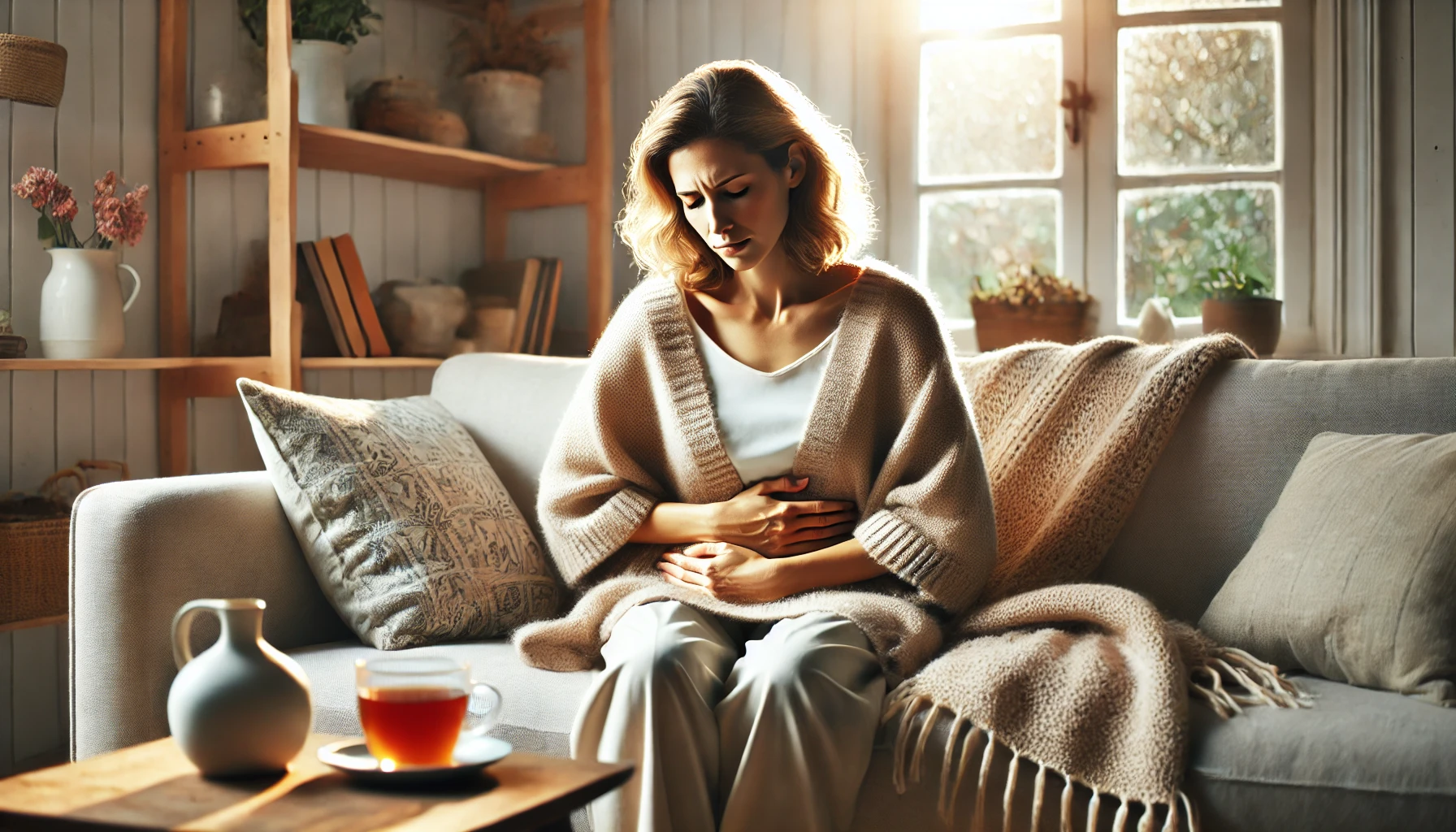You thought you’d left cramps behind for good. After all, menopause is supposed to be the finish line, the reward for decades of discomfort. But here you are—fighting cramps during menopause with no period in sight. It’s maddening. The pain catches you off guard, a cruel reminder of a cycle that’s meant to be over. You wonder, “Is this normal? Will it ever end?”
You’re not imagining things, and you’re not alone. Many women face this hidden battle in the menopause transition. It’s confusing, exhausting, and more common than you might think. The good news? Understanding what’s happening in your body is the first step to finding relief and regaining control.
Why Cramps Still Haunt You
Menopause isn’t just about stopping your period. It’s a seismic shift that touches every part of your body. Hormones like estrogen and progesterone, which used to manage your cycle, are now in chaos. These changes don’t just fade quietly—they leave aftershocks in the form of cramps, hot flashes, and sleepless nights.
You might feel betrayed by your body. You made it through years of monthly agony only to be ambushed by these phantom cramps. But here’s the truth: your body isn’t broken. It’s navigating a complicated symphony of hormonal decline and imbalance. Unfortunately, when hormones fall out of sync, it can manifest as tension, inflammation, and yes—those dreaded cramps.
What Causes Cramps During Menopause With No Period?
Understanding the triggers behind these cramps can help you reclaim control. Here are the most common culprits.
1. Hormonal Imbalance: The Main Offender
Hormones don’t retire smoothly—they fluctuate wildly before declining. Estrogen, in particular, plays a crucial role in regulating inflammation and tissue health. When estrogen levels drop but not in sync with other hormones like progesterone, your body may react with cramping.
Think of estrogen as a protective cushion for your reproductive organs. Without it, tissues in your uterus and pelvis become more sensitive, sometimes mimicking the cramping you experienced during menstruation. It’s like your body is stuck playing a cruel trick—reliving pain without the usual cause.
2. Lingering or Silent Conditions
Many women discover that menopause can reactivate or worsen existing health issues. Conditions like uterine fibroids, endometriosis, and ovarian cysts might have gone unnoticed for years. When estrogen levels plummet, these issues can flare up, causing persistent cramps.
Even pelvic adhesions, a byproduct of past surgeries or infections, can become painful as hormone-driven inflammation shifts. This is why healthcare providers often recommend investigating persistent cramping during menopause—it may signal an underlying condition that needs attention.
3. Digestive Disruptions Masquerading as Cramps
If you’ve felt bloated, gassy, or constipated, you’re not alone. Menopause impacts your gut health more than most people realize. Estrogen affects digestion, and without it, your system can slow down, leading to painful bloating that feels similar to menstrual cramps.
Foods that never used to bother you may now leave you clutching your abdomen. Digestive triggers, like sugar, processed carbs, or dairy, become more pronounced. This pain isn’t “all in your head”—your body is struggling to adjust to life without the hormonal regulation it’s relied on for decades.
4. Muscle Tension and Cortisol Overload
Stress doesn’t just affect your mind; it wreaks havoc on your body. When estrogen drops, your body becomes more sensitive to cortisol, the stress hormone. High cortisol levels can trigger widespread inflammation, including in the pelvic muscles.
Have you ever noticed how stress tightens your stomach and shoulders? That same tension can settle deep in your pelvic region, leading to cramps that feel all too familiar. Chronic stress turns your muscles into a battlefield, where pain thrives.
Cramps During Menopause With No Period: How to Ease the Pain
You don’t have to suffer through this in silence. There are powerful, natural ways to manage and reduce menopausal cramping. By addressing both hormonal imbalances and stress, you can help your body find peace again.
1. Balance Your Hormones by Managing Cortisol
Here’s a secret many women don’t know: cortisol might be your biggest enemy right now. Menopause doesn’t just deplete estrogen and progesterone—it shifts the entire balance of stress hormones. This is where cortisol regulation becomes critical.
Natural cortisol regulators like ashwagandha have been shown to reduce anxiety, promote restful sleep, and stabilize fluctuating hormones. By lowering cortisol, you can create a more harmonious hormonal environment, reducing both inflammation and cramping.
2. Herbal Allies for Pain Relief
Certain herbs have stood the test of time in supporting women’s health. Black cohosh and chasteberry, for instance, are known to ease cramping, reduce inflammation, and stabilize mood. These herbs work by supporting your body’s natural hormone regulation processes.
Incorporating herbal teas or supplements with these ingredients can offer gentle, ongoing relief. You might be surprised how quickly your body responds to consistent, natural support.
3. Reboot Your Gut Health
An imbalanced gut can be a sneaky source of cramping. Start by eliminating common inflammatory triggers from your diet—like sugar, processed foods, and excess caffeine. Replace them with whole foods rich in fiber and antioxidants, which help calm inflammation.
Probiotic-rich foods like yogurt, kefir, or fermented vegetables can also restore healthy bacteria to your gut. Many women report significant relief from bloating and cramping after making simple dietary adjustments.
4. Move with Intention
Exercise may be the last thing on your mind when you’re in pain, but gentle movement can work wonders. Activities like yoga, walking, or light stretching help increase circulation and reduce muscle tension in your pelvic area.
Certain yoga poses, like child’s pose or gentle hip openers, specifically target pelvic tension. Over time, movement builds resilience and reduces the frequency of pain flare-ups.
5. Calm Your Mind, Calm Your Body
Stress is an unavoidable part of life, but how you respond to it can shape your physical health. Try incorporating daily stress-reduction practices, like deep breathing exercises or meditation. These techniques have been shown to lower cortisol levels and reduce muscle inflammation.
Even setting aside five to ten minutes a day for relaxation can create lasting benefits. Pairing this with natural supplements designed to regulate cortisol may give you the double protection your body craves.
When Should You Worry?
While most menopausal cramps are manageable, it’s important to recognize warning signs. Seek medical attention if you experience:
- Sudden or severe abdominal pain
- Unexplained weight changes
- Blood in your stool or urine
- Pain that worsens or doesn’t improve
These symptoms could indicate a more serious condition that requires prompt treatment.
Take Back Control
Cramps during menopause with no period may feel like a cruel twist, but they don’t have to define this stage of life. You have options—natural, empowering options that can help you feel like yourself again.
MenoRescue offers a solution designed with your unique needs in mind. By addressing cortisol dysregulation alongside hormonal balance, it helps reduce symptoms like cramping, fatigue, and mood swings. You deserve relief that lasts.
Don’t let menopause take control of your body. Take the next step and discover how you can escape the menopause rollercoaster—starting today.





